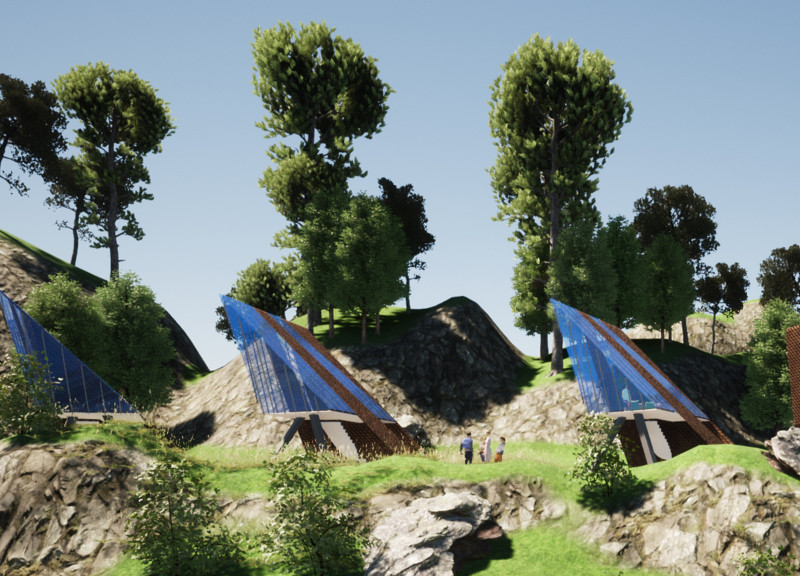5 key facts about this project
The design is situated within a landscape that merges modern structure with natural elements. It operates as both an active social space and a peaceful retreat, created to enhance the user experience through careful spatial planning. The concept focuses on establishing meaningful connections between the building and its environment, inviting visitors to engage deeply with both.
Roof Form and Structure
A notable aspect of the design is the tent-shaped roof, which uses asymmetrical angles to shape the interior space. This roof includes a mix of closed, wood-clad sections and glazed areas that allow natural light to penetrate the interiors. The roof's profile adds visual appeal and encourages a connection between indoor activities and the outdoors, breaking down traditional barriers.
Material Choices
The exterior surface features wood shingles paired with a steel-glass façade. This combination reflects a practical approach, balancing strength and design. The use of galvanized steel for the load-bearing components enhances stability while creating a minimalist aesthetic. The untreated wooden flooring adds warmth, harmonizing with the natural surroundings and inviting a more relaxed atmosphere.
Spatial Configuration
Interior spaces are designed with a thoughtful mix of openness and privacy. Visitors experience a fluid transition as they move from the base area up to the gallery via an organically curved staircase. This design not only connects the different levels but also supports the experience of the overall space. Well-placed lighting features highlight architectural details, further enriching the environment and guiding movement throughout the building.
Foundation and Site Integration
The foundation is built on individual footings that adapt to the site’s uneven terrain. This approach respects the natural layout of the land, ensuring that the design remains connected to its context. Each element thoughtfully contributes to the overall experience, where visitors feel a clear blend of structure and nature. The result is a space that is both engaging and soothing, encouraging exploration and reflection.






















































